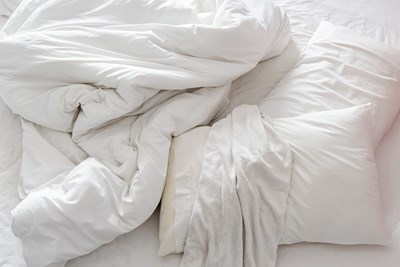Bed sores, also called pressure sores, form due to prolonged pressure on the skin. They can develop anywhere on the body, but normally occur below the waist. Here is a closer look at what exactly causes bed sores.
Causes
Immobility hinders an individual's ability to relieve the pressure needed to prevent bedsores. This pressure damages your skin and underlying tissue. When you sit or lie in one place for a prolonged period of time, the surface puts constant tension on the pressure points of your body—these include your tail bone, hip bone, ankle and heel, elbows, spine, ribs, and the back of your head.
Friction is skin rubbing against another surface, or two layers of skin sliding against each other—the layers move in opposite directions and cause damage to your underlying tissue. This can happen when you’re moved from your bed to a stretcher or when you slide down in a chair.
Excessive moisture softens the skin, causing a reduction in its resistance. This most commonly occurs with excessive perspiration and with fecal or urinary incontinence.
Risk Factors
The following factors can increase your risk for bedsores:
- Lack of mobility: If you use a wheelchair or are confined to a bed due to illness, injury, or sedation, you have a high risk of developing bedsores.
- Spinal cord injuries: Nerve damage is often permanent with these types of injuries, which results in constant compression of the skin and tissue. Damage, atrophied skin, and poor circulation also increase the risk of sores.
- Age: Elderly people have thinner skin, which is vulnerable to damage from minor pressure, increasing the risk for bedsores.
- Nutrition: Poor nutrition can impair the quality of your skin and blood vessels, affecting healing. You need a sufficient amount of fluids, calories, protein, vitamins, and minerals in your diet to keep skin healthy.
- Smoking: Nicotine affects your circulation by reducing the amount of oxygen in your blood—this affects proper healing.
- Weight: If you’re underweight your bones don’t have the necessary fat and muscle around them, leaving your bones vulnerable to bed sores.
- Lack of pain sensation: Bed sores can be prevented by relieving pressure, usually by changing position. You know when to change position once you start to feel pain or discomfort, but if you can’t feel pain you can’t relieve it. As a result, you may not realize a bedsore is developing.
- Dryness: Very dry skin can increase friction, which increases risks for bedsores.
- Other illnesses or conditions: Conditions, such as diabetes and vascular disease, that affect circulation can cause problems with proper blood flow to some tissues, leading to tissue damage.



